Route Highlights
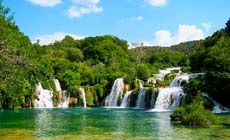
Krka National Park
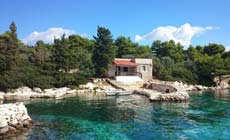
Island of Zut
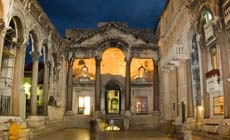
Palace of Diocletian
Itinerary
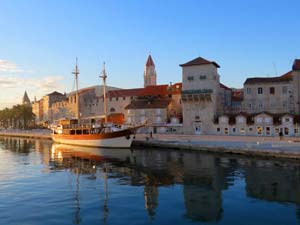
Day 1 Trogir
Trogir is basically a town-museum, and this is true from the minute one sets foot in the place. This is should be the place to visit for enthusiasts of both cultural and historical monuments, original architecture, wonderful alleys, and art. In Trogir, the opportunity is provided to learn more about the manifold and complex heritage, ranging from the Romanesque yard to the modern interiors that are simply marvelous. Trogir’s unique history, the Radovan’s portal and the vast number of art collections have been a spectacle of interest among travelers for centuries. This is because they offer unique beauty that is personified in the relief of Kairos which is a major attraction for tourists.
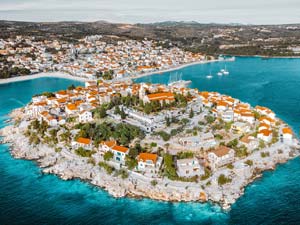
Day 2 Primosten
Sailors used to call it “Dry Point” because of the prolonged dry spell that the region experiences. It is set up on an island that was used five centuries ago by its inhabitants as a causeway as they went to the fields. Primosten is surrounded by seven little islands and in this case, is it stands out from the rest of the islands without doubt. What nature did not give, the industrious inhabitants created; making Primosten one of the most beautiful locations in the entire Adriatic experience. The stone houses, churches and narrow lanes are in perfect harmony of the past and the present state of life.
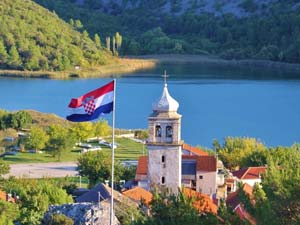
Day 3 Skradin
Skradin, the headquarters of Krka National Park and was declared to be Croatia’s seventh national park in 1985. The natural state has remained unchanged and boasts of vast spaces of multifaceted natural value. It is also home to one of the least altered ecosystems in the world. Skradin is one of Croatia’s oldest settlements that still retain the status of ‘town’ dating as far back as 2BC. Located only a short distance from Skradinski Buk, the Krka River flows with tranquility it represents the centre of life from ancient times. It is located between two wonderful waterfalls Skradinski Buk and Roski Slap where the Visovac Lake and the Franciscan monastery rest on the islet.

Day 4 Zut/Kornati
The island of Zut, which is part of the Kornati Archipelago, is located between the islands of Pasman and Kornat. The oldest documented records of fishing go as far back as the 10th century. It is evident that in Croatia, fishing began as a trade in these coasts. The island has no permanent settlements and all that stands are temporary houses for fishermen and farmers from Murter. The hillsides and the meadows that have been cultivated perfectly are very rich in Mediterranean vegetation. They harbor over 300 species of flora, and fauna are just as rich. The world inside the sea is home to more than 250 plant and 300 animal species.
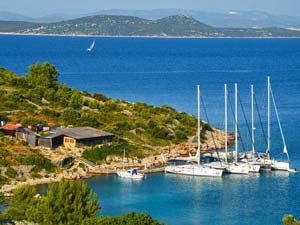
Day 5 Kaprije
The island was named after a Mediterranean plant called Kapara. In the 14th and 15th century, this island belonged to noblemen hailing from Sibenik and their families. In the 16th and 17th century, during the Turkish Invasion, Kaprije became home to refugees from the mainland as the Turks retreated. It is in this same period that St. Peter’s church was built and enlarged later in 1801. The area is hilly with the highest being Velika glavica which is 132m above sea level. Besides agriculture, inhabitants of the area are well known as proficient fishermen, seamen and according to recent reviews, very hospitable hosts.
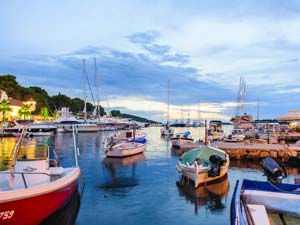
Day 6 Maslinica/Solta
Maslinica is the only Soltan village that is located in the cove of the western side of the island. Towards the southern side, it boasts of beautiful scenery comprising of picturesque cove and pinewood. It is also home to the well protected cove of Sesul and the archipelago of seven islands. Exposed only to the North-Westerly winds, Maslinica provides favorable anchoring ground and shelter for the smaller yachts. The inhabitants of Maslinica engage in activities such as farming, olive growing, fishing, wine production, tourism and fruit growing for both domestic and subsistence purposes. Initially, the island was named Olyntha in the 4th Century BC by Pseudoscylax, but the Romans renamed it Solenta.

Day 7 Split
Split is a tourist destination, rife with road and sea connections to the numerous summer resorts offered by Dalmatia. It is an urban, cultural and also a traffic centre which is a favorable tourist and excursionist destination. It is a city with tradition that dates more than 1700 years with various historical, archaeological and cultural monuments to show for it. Among the monuments here is the Palace of Diocletian that is also inscribed onto the UNESCO World Heritage List. To this city, it occupies a unique place alongside the hospitality of a modern Mediterranean city.
